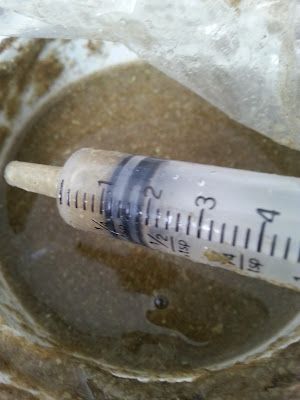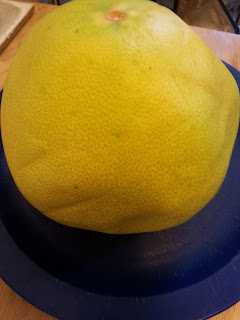Most of the products we review are intended for use by all guinea pigs (whether or not they should actually be used by them, or will actually be enjoyed by them, is a separate question). Today's review will be of a different kind of product:
Oxbow Critical Care, Apple Banana flavor. As the package states, this product is a "premium recovery food which can given to herbivores with poor nutritional status resulting from illness or surgery."
 |
| I do like Oxbow, apples, and bananas. But not being sick. |
I'd probably prefer it if I didn't have to use a product like this, but seeing as how
I was diagnosed with uterine cancer, this product has made a huge difference. It's really helped to keep my weight stable.
 |
| Critical Care comes in a powder, which has to be mixed with water into a soupy paste before you use it. |
The humans have learned to only give me one unit of the syringe at a time, and then wait a while for me to finish eating it before giving more. Any more than that, and it will spill out of my mouth. They then try to wipe off my chin with a tissue, and I can't help but trying to eat the tissue, which frustrates and baffles the humans. (Have you ever tried chewing on a tissue? They're loads of fun to chew! I guess it's just a guinea pig things that humans don't understand. Like how we don't get you humans chewing gum.)
 |
| It's not bad. |
Critical Care is definitely no
carrot--I wouldn't recommend just eating it as a treat. But as a guinea pig food for medical purposes, it works great. The taste is okay, and more importantly, it helps me keep my weight up; my weight had gone down to 607 grams at one point, and now I'm able to keep it at around 800 grams. And for this very important reason,
Critical Care with Apple and Banana gets 5/5 stars!









